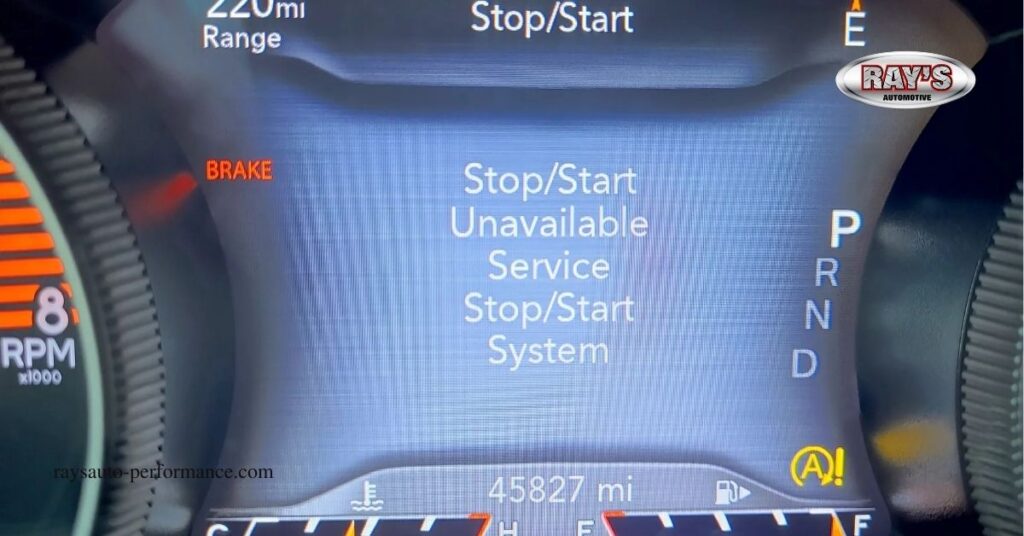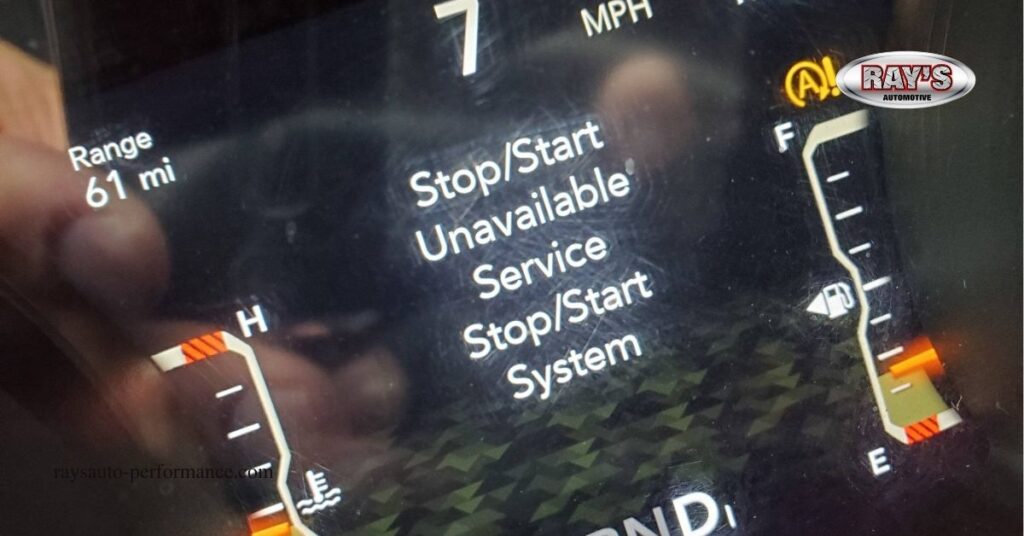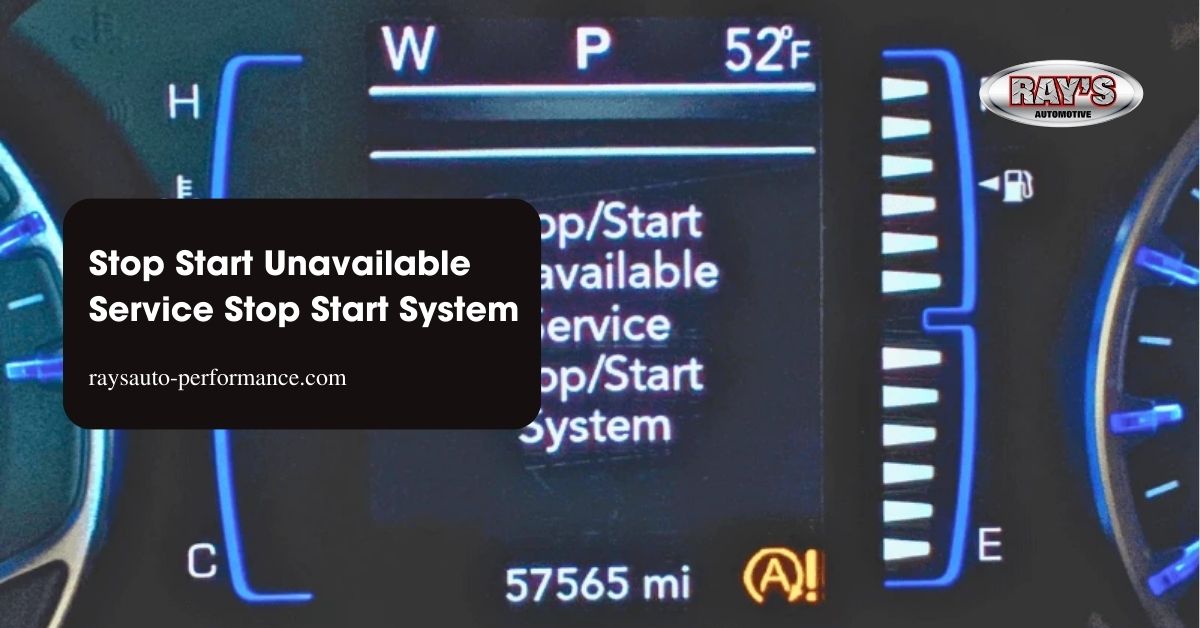Imagine cruising down the road, knowing your vehicle is designed to save fuel and reduce emissions. The stop-start system does just that, seamlessly shutting off your engine when you come to a halt and instantly restarting it when you’re ready to go. But what happens when this system becomes unavailable?
Overview of Stop Start Unavailable Service Stop Start System

Stop start systems significantly enhance fuel efficiency and lower emissions by automatically managing engine operation. When the stop start feature is unavailable, performance and efficiency may decline, leading to increased fuel consumption and higher emissions. Understanding the malfunction can empower you to take corrective steps.
Various factors contribute to the failure of a stop start system. Battery health plays a crucial role; if the battery doesn’t maintain sufficient charge, the system may not engage. Environmental conditions also impact operation. Extreme temperatures might hinder battery performance and system effectiveness.
Diagnostic tools can identify issues within the stop start system. Regularly checking vehicle diagnostics helps pinpoint problems before they escalate. Maintenance practices ensure the system’s functionality and longevity.
Drivers should remain aware of dashboard alerts about system availability. Noticing an indicator can prompt you to evaluate necessary actions. Consulting with a professional mechanic enhances the likelihood of maintaining system efficiency, ensuring further fuel savings and reduced emissions.
Key Features of the System

The stop-start system includes several essential features that enhance vehicle performance. Understanding these aspects can assist you in recognizing the advantages and implications when the system is unavailable.
Fuel Efficiency Benefits
Fuel efficiency significantly improves with the stop-start system. The engine shuts down during stops, reducing the amount of fuel consumed. Statistics show that this feature can save up to 10% of fuel consumption in city driving. When the engine restarts seamlessly, it allows for a smoother driving experience, encouraging more economical habits. You’ll notice that staying aware of when the system is operational can lead to further savings on fuel costs.
Impact on Emissions
Emissions decrease when the stop-start system functions correctly. By turning off the engine during idle periods, it prevents unnecessary exhaust output. Research indicates that utilizing this system can lower CO2 emissions by approximately 5% to 15%. If the system is unavailable, your vehicle might contribute more to pollution than necessary. Awareness of this feature’s functionality can encourage more environmentally friendly driving practices.
Performance Analysis

The performance of the stop-start system significantly impacts your vehicle’s fuel efficiency and overall functionality. When the system works correctly, it enhances fuel economy during city driving, potentially saving up to 10% of fuel consumption.
User Experience and Feedback
Drivers frequently report encountering the “Stop/Start Unavailable” warning, indicating challenges with the system’s functionality. This warning often prompts concerns about fuel efficiency and environmental impact. Feedback suggests that issues can stem from various factors including battery health, ambient temperature, and driving conditions. Many users highlight the importance of promptly addressing these warnings to maintain optimal fuel savings.
Common Issues Encountered
Several common issues hinder the stop-start system’s proper operation. Battery health stands out as a crucial factor; if the battery is weak, the system may not activate as intended. Environmental temperatures also play a role, with extreme cold or heat affecting performance. Also, frequent short trips often lead to diminished efficiency, leaving the system unable to engage. Understanding these pitfalls allows you to take steps to remedy issues, ensuring consistent utilization of the stop-start feature.
Maintenance Considerations

Maintaining your vehicle’s stop-start system is essential for optimal performance and efficiency. Focusing on key areas helps prevent issues that lead to the “Stop/Start Unavailable” warning.
Recommendations for Upkeep
Regularly checking your battery health is crucial. A battery voltage reading above 12.6 volts indicates good health. Keeping the battery terminals clean enhances connectivity. If the battery is old or weak, consider replacement to minimize issues.
Monitoring the alternator function also plays a important role. Make sure to test the alternator’s voltage output while the engine runs. An optimal range is between 13.7 and 14.5 volts. If the output is low, a faulty alternator could drain the battery, leading to malfunctioning of the stop-start system.
Pay attention to the cooling system. Ensure the engine temperature remains within the optimal range, which supports the smooth operation of the stop-start feature. A well-maintained cooling system prevents the engine from overheating.
Troubleshooting Tips
If you encounter the “Stop/Start Unavailable” message, begin with a battery check. Inspect the voltage and terminals first. Make sure to clean any corrosion, as it can impede performance.
Next, evaluate the alternator’s output. If it falls outside the necessary range, consider taking your vehicle for service. Faulty alternators often cause battery drain, impacting the system’s ability to function.
Finally, monitor environmental conditions. Extreme temperatures can affect battery performance, while frequent short trips do not allow the battery to recharge fully. Adjusting driving habits can help maintain system functionality.
Conclusion
Maintaining your stop-start system is essential for maximizing fuel efficiency and minimizing emissions. By staying vigilant about battery health and environmental factors, you can ensure that this system operates smoothly. Regular maintenance checks and prompt attention to dashboard alerts can help you avoid the frustrating “Stop/Start Unavailable” warning.
Remember that a well-functioning stop-start system not only benefits your wallet but also contributes to a healthier environment. By taking proactive steps to address potential issues, you can enjoy the full advantages of this innovative technology and drive more economically.
Frequently Asked Questions
What is a stop-start system in vehicles?
The stop-start system automatically turns off the engine when the vehicle stops and restarts it when the driver is ready to move. This feature helps save fuel and reduce emissions, particularly during city driving.
What happens when the stop-start system is not functioning?
When the stop-start system is unavailable, vehicle performance and efficiency may decline. This often leads to increased fuel consumption and higher emissions, negatively impacting both your driving experience and environmental footprint.
What factors contribute to stop-start system failure?
Common factors include battery health issues, extreme environmental conditions, and frequent short trips. These elements can hinder the system’s operation, causing warnings like “Stop/Start Unavailable.”
How can I maintain my stop-start system?
Regular maintenance is key. Check battery health, alternator function, and cooling system efficiency. Ensure your battery voltage stays above 12.6 volts and the alternator output is between 13.7 to 14.5 volts for optimal function.
What should I do if I see the “Stop/Start Unavailable” warning?
If you encounter this warning, start by checking the battery and alternator health. Monitor environmental conditions and consider adjusting your driving habits to promote better system functionality. Consulting a professional mechanic can also help.
How much fuel can a stop-start system save?
A well-functioning stop-start system can save up to 10% of fuel during city driving, significantly enhancing overall fuel efficiency and contributing to lower emissions.

